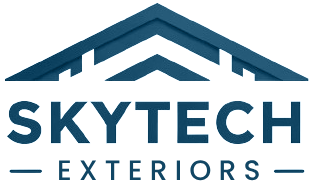How Do I Finance a Roof Replacement?
Replacing your roof is a substantial investment, often
ranging from $7,000 to $12,000, depending on various factors such as the size
of the roof and the materials used. As you approach the purchase stage and
finalize your decision, understanding your financing options is crucial. This
article will guide you through the available financing methods, helping you
make an informed choice while ensuring you can work with reputable roofing
companies near me or affordable roofers near me.
1. Understanding Roof Replacement Costs
Before diving into financing options, it’s important to have
a clear understanding of what affects roof replacement costs:
Size and Complexity: The size of your roof and its
complexity (e.g., multiple slopes, chimneys) can significantly impact the
overall cost.
Materials: Different roofing materials come with varying
price points. For instance, asphalt shingles are generally more affordable than
metal or slate roofing.
Labor Costs: Labor costs can vary based on your location and
the roofing company’s pricing structure.
Statistical Insight: According to HomeAdvisor, the average
cost of a roof replacement in the U.S. is between $7,000 and $12,000, with
factors such as location and material choice influencing the final price.
2. Financing Options for Roof Replacement
When it comes to financing your roof replacement, you have
several options to consider:
1. Home Equity Loans
A home equity loan allows you to borrow against the equity
in your home. The loan amount is based on the difference between your home’s
market value and the remaining balance on your mortgage.
Advantages: Lower interest rates compared to credit cards
and personal loans; potential tax-deductible interest.
Disadvantages: Risk of foreclosure if you fail to repay;
requires significant equity in your home.
Statistical Insight: According to the Federal Reserve, home
equity loans have an average interest rate of around 6%, which is lower than
the average credit card rate of approximately 16%.
2. Home Equity Lines of Credit (HELOCs)
A HELOC is a revolving line of credit secured by your home’s
equity. Unlike a home equity loan, a HELOC provides flexibility, allowing you
to borrow as needed up to a certain limit.
Advantages: Flexible borrowing; lower interest rates
compared to personal loans or credit cards.
Disadvantages: Variable interest rates; risk of foreclosure.
Statistical Insight: The National Association of Realtors
(NAR) reports that HELOCs often come with an average interest rate of 6.5%, but
rates can vary based on market conditions.
3. Personal Loans
Personal loans are unsecured loans that you can use for
various purposes, including roof replacement. They typically come with higher
interest rates compared to secured loans.
Advantages: No collateral required; quicker approval
process.
Disadvantages: Higher interest rates; shorter repayment
terms.
Statistical Insight: Personal loans usually have interest
rates ranging from 6% to 36%, depending on credit score and lender.
4. Credit Cards
Using a credit card to finance a roof replacement is an
option, though not always the most cost-effective. This method can be
convenient but comes with high interest rates.
Advantages: Easy access to funds; potential rewards or
cashback.
Disadvantages: High interest rates; potential for high debt.
Statistical Insight: The average credit card interest rate
in the U.S. is approximately 16%, according to the Federal Reserve.
5. Roofing Company Financing
Many roofing companies near me or local roofing companies
offer financing options directly to their customers. These plans might include
promotional periods with zero interest or other attractive terms.
Advantages: Convenient; potential for promotional offers.
Disadvantages: Terms and interest rates vary; may require
good credit.
Statistical Insight: The National Roofing Contractors
Association (NRCA) notes that about 30% of roofing companies offer in-house
financing options to facilitate customer purchases.
6. Government Programs for Roofing
Certain government programs may offer financial assistance
or favorable loan terms for home improvements, including roof replacements.
Advantages: Potentially low-interest rates or grants.
Disadvantages: Eligibility requirements; application process
may be lengthy.
Statistical Insight: The U.S. Department of Housing and
Urban Development (HUD) offers the Title I Property Improvement Loan program,
which provides loans up to $25,000 for home improvements.
3. How to Choose the Right Financing Option
When selecting a financing method for your roof replacement,
consider the following factors:
1. Interest Rates
Compare the interest rates of different financing options.
Lower rates mean lower overall costs.
2. Repayment Terms
Evaluate the repayment terms, including the length of the
loan and monthly payments. Ensure that the terms fit within your budget.
3. Fees and Costs
Be aware of any additional fees, such as application fees,
closing costs, or prepayment penalties. These can add to the total cost of
financing.
4. Lender Reputation
If you choose a personal loan or credit card, research the
lender’s reputation and customer service. Read reviews and check their ratings
with agencies like the Better Business Bureau (BBB).
Statistical Insight: A survey by J.D. Power indicates that
customer satisfaction is higher for lenders with transparent fee structures and
responsive customer service.
4. Finalizing Your Roof Replacement
Once you’ve chosen a financing option, you’re ready to move
forward with your roof replacement. Here’s what to expect:
1. Obtain Multiple Quotes
Get quotes from several residential roofing companies or
local roofing contractors to ensure you’re getting a fair price. Compare these
quotes to determine the best value.
2. Review the Contract
Thoroughly review the contract with your chosen contractor.
Ensure that it includes a detailed breakdown of costs, materials, and
warranties.
3. Schedule the Work
Work with your contractor to schedule the roof replacement.
Be prepared for the project to take several days, depending on the size and
complexity of your roof.
4. Monitor the Project
Stay in communication with your contractor throughout the
project. Monitor the progress and address any concerns promptly.
Statistical Insight: The NRCA reports that 85% of homeowners
who actively communicate with their contractors are more satisfied with the
final outcome of their roofing project.
Financing a roof replacement involves exploring various
options to find the best fit for your financial situation. Whether you choose a
home equity loan, HELOC, personal loan, credit card, or financing through a
Charleston roofing company, understanding the terms and costs associated with
each option is key. By comparing rates, terms, and fees, and working with
reputable roofing companies near me, you can make an informed decision that
aligns with your budget and needs.


